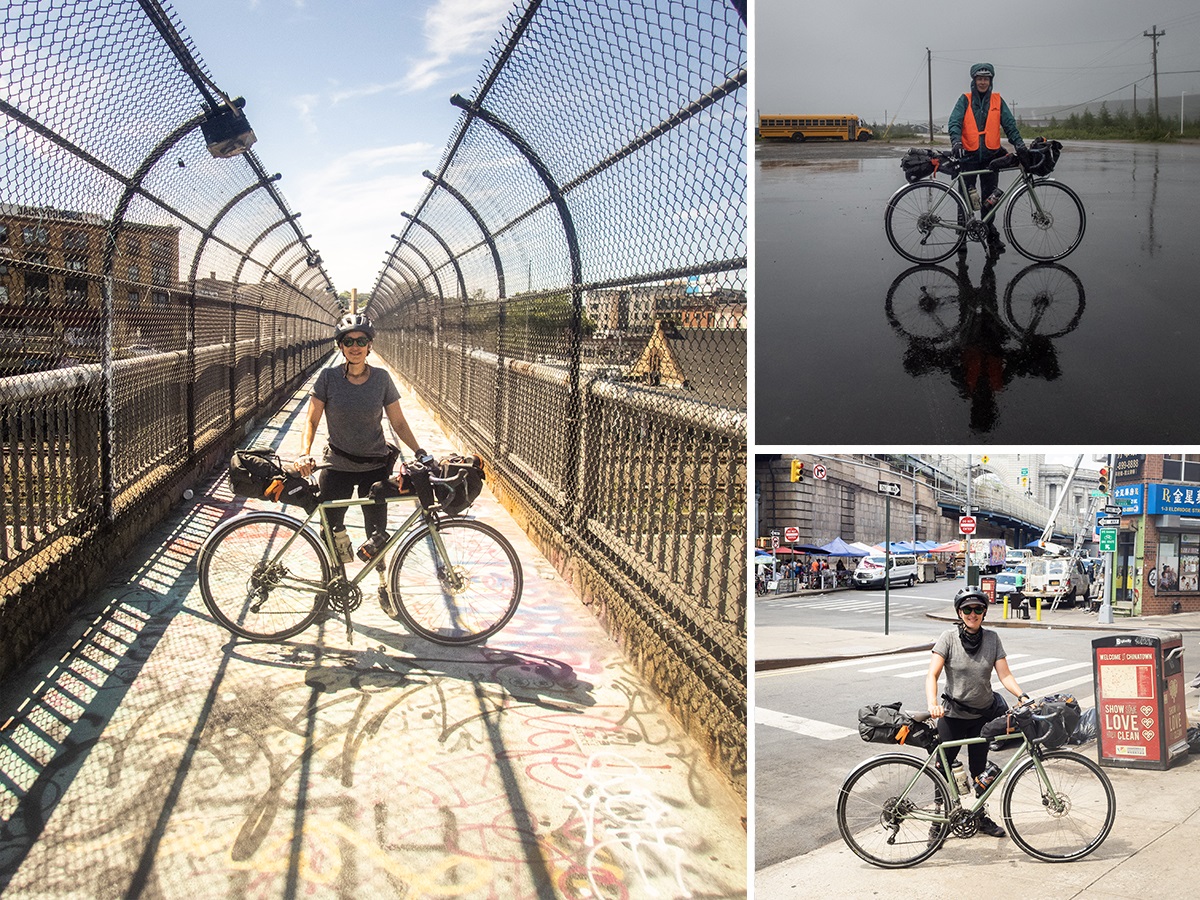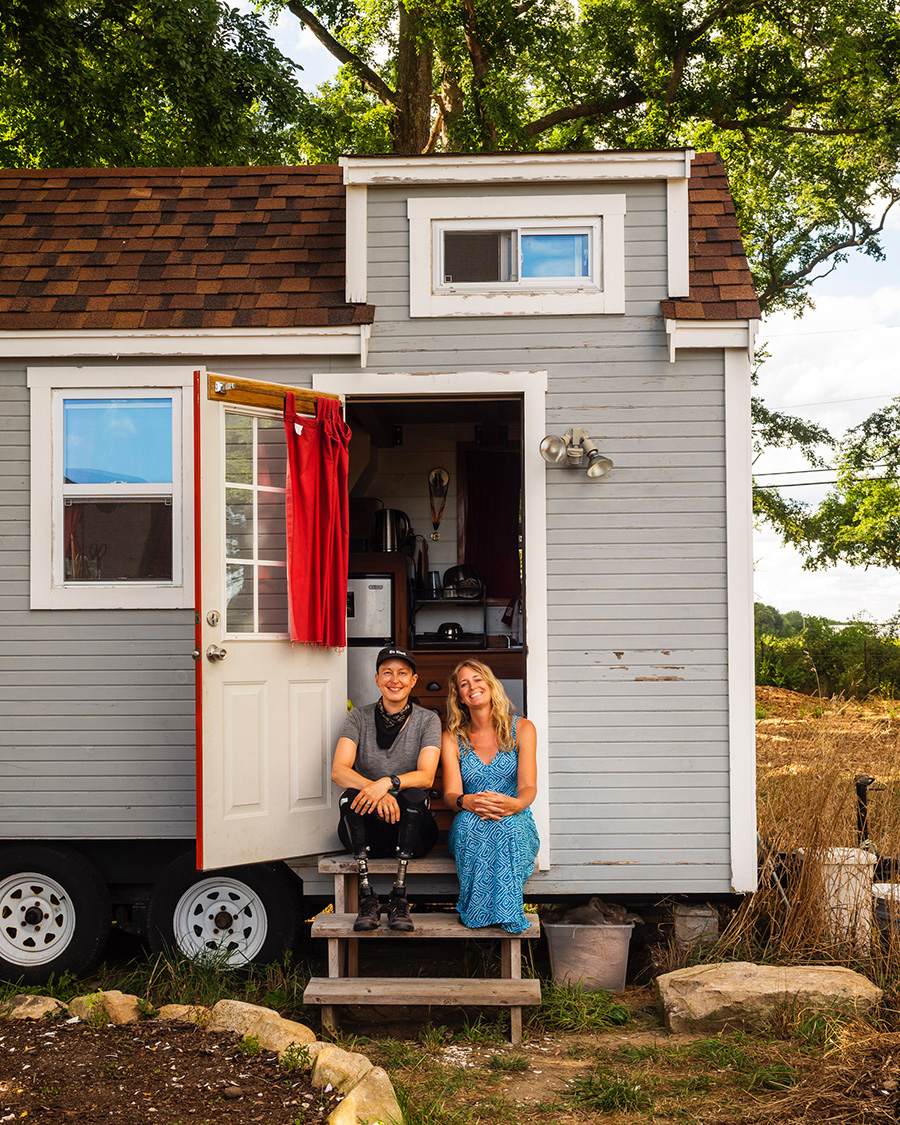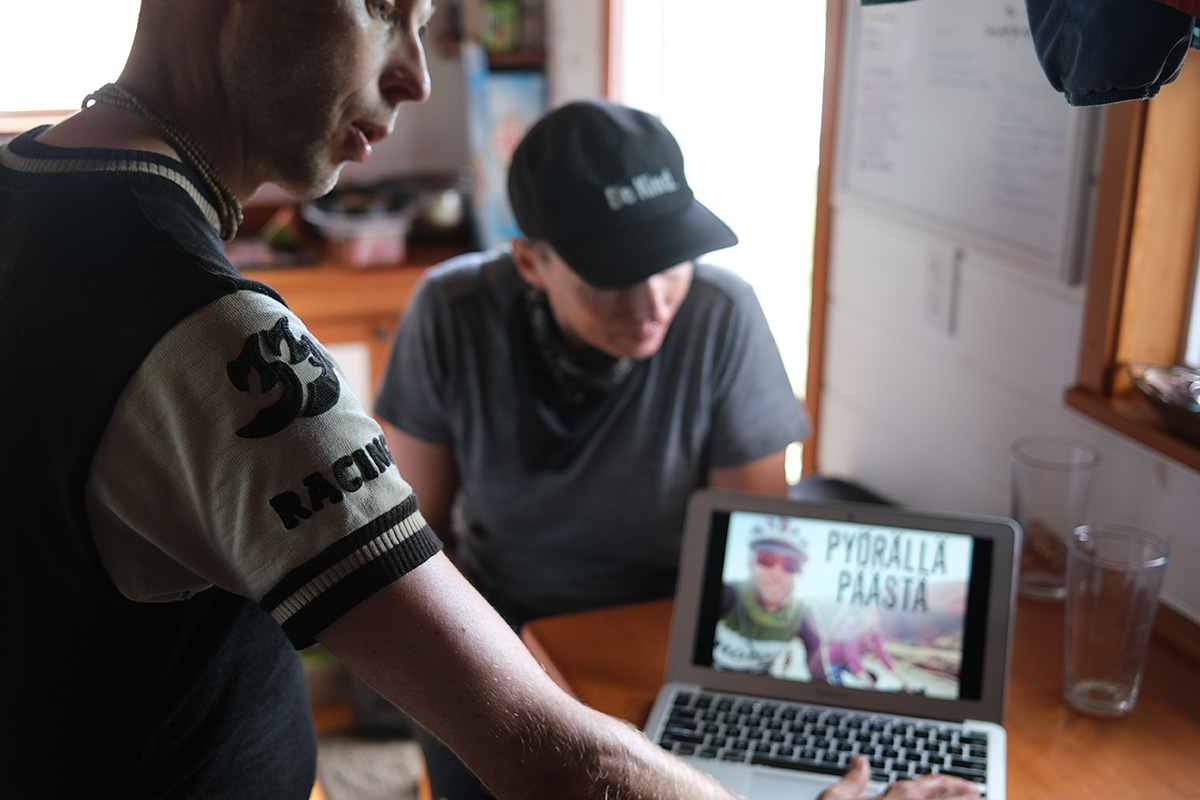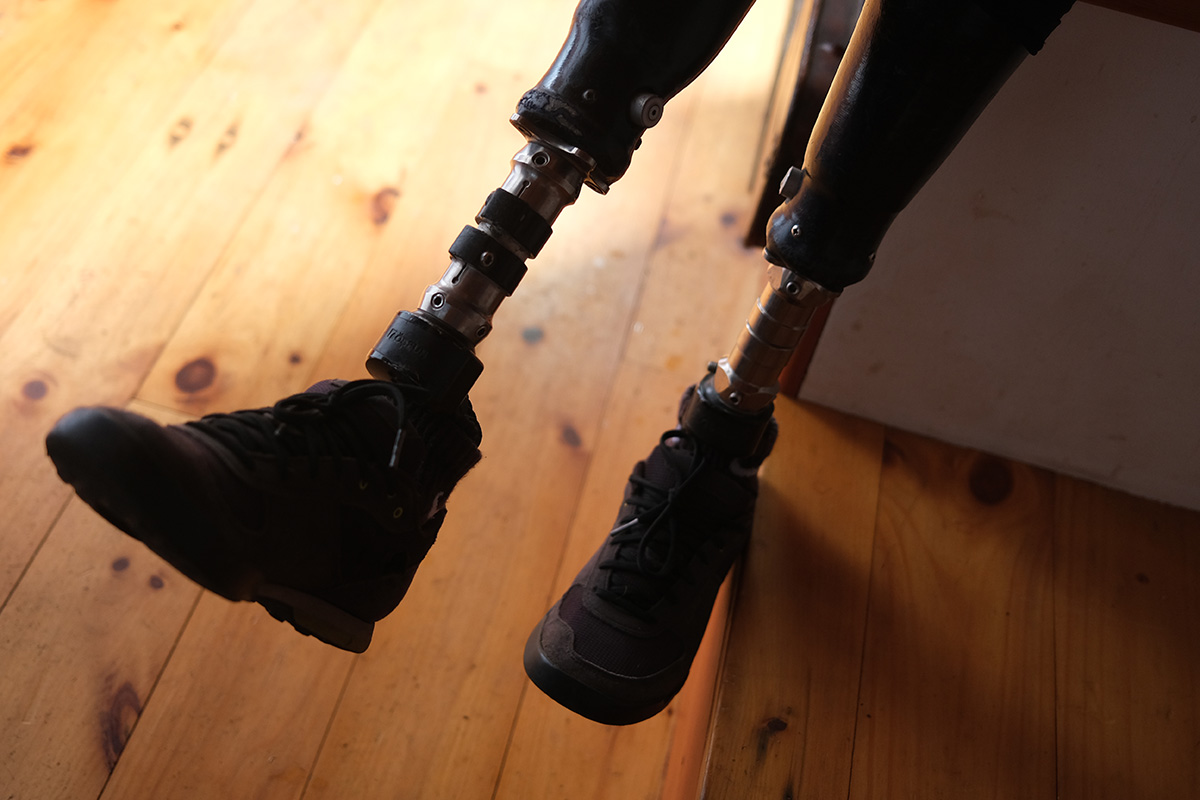Along the Atlantic Coast on Carbon Legs
There are people in this world who change the way you think about everything, and Kaisa Leka is one of them.
I first met Kaisa in a Zoom interview for cyclist Annalisa Van Den Berg’s film series, Miles of Portraits. I sat on the floor at a friend’s house in Massachusetts, my laptop propped in front of me on a chair. On the screen, I watched Kaisa lounging in a library in her home country of Finland, her legs crossed prominently in front of her. When your legs are made of carbon, this is what you call a “power move.” We chatted about Kaisa’s life, her legs, and her many books and adventures. At the end of the interview, all I could think was, “Wow. Wow, this person is truly, vibrantly alive.”
Kaisa was born with a severe malformation of her legs and ankles, which made it difficult and painful for her to walk. One day she read a magazine article about a paralympic athlete with carbon leg prosthetics. She brought the article to her doctor and asked to have her legs amputated. A few months later, Kaisa had a new set of silvery carbon legs.
Less than six months after her operation, Kaisa learned to ride a bike again. Soon, she was biking across entire countries.

In the two decades since Kaisa got her prosthetics, she’s cycled thousands of miles around the world. She and her partner Christoffer have pedaled together across the U.S., Canada, Russia, Costa Rica, Japan, and Europe. They’ve also gone on long sea kayaking trips to remote coastal islands. The couple commemorates these adventures in award-winning, illustrated books and interactive art installations.
I think for most people, the idea of actively choosing to have their legs amputated is beyond the realm of imagination. But imagination is exactly what Kaisa has lots of. Her books and artwork often merge real life adventures with fantastical characters. (She draws herself as a mouse and Christoffer as a duck.) When I look at her artwork, I wonder if this same stream of creativity is what led her to embrace her own physical transformation. It takes a lot of imagination to move through the realities of change.
This summer, Kaisa and Christoffer set out on another long cycling trip around Canada and the U.S. They started in Montreal, pedaled up to Quebec City, and then turned onto the Labrador Highway. The Labrador Highway is a 714-mile stretch of road that passes through large tracts of remote wilderness and bogs. In 2018 I took a similar (but shorter!) route from Montreal up the north shore of the Saint Lawrence River, and I will never forget the beauty of the landscape — or the treacherous hordes of bloodthirsty black flies. To pedal this route on carbon legs is truly an epic feat.
After the Labrador Highway, Kaisa and Christoffer took a ferry to Newfoundland. Then they cycled and ferried their way across Eastern Canada toward Bar Harbor, Maine, where they started Adventure Cycling’s Atlantic Coast Route to navigate along the coast toward their final destination of New York.
I’d been following Kaisa and Christoffer’s trip on Instagram, and when I saw they were nearing my home in Massachusetts I invited them to visit. A few days later, they pedaled into the front yard. Even though we’d never met in person, it felt like a reunion. They had cycled thousands of miles through sunshine and rain, wind and fair weather, and were finally here in my little corner of the world!

My “little corner” is beautiful but quite rustic. I live in a sixteen-by-eight-foot tiny house on a farm and education center with a shared kitchen and bathrooms. Getting from place to place can be an obstacle course of construction sites, rocks, stairs, and winding paths. Kaisa and Christoffer accepted the situation with total grace and adaptability. We wandered around by foot and bike, figured out how to navigate the obstacles, and then went back to my tiny house for snacks and story time.
Christoffer set his laptop on my tiny kitchen table and gave a lively photo presentation about their cycling adventures around the world. We traded tales about where we’d pedaled and what had happened on the road. At one point, Christoffer told a story about Kaisa’s prosthetic leg falling off in the Pacific Ocean. Then Kaisa reached down, unclipped one of the prosthetics, and waved it in the air to demonstrate. It was the coolest magic trick I’d ever seen.
They spoke more about their trip down the Atlantic Coast from Maine. Kaisa is the planner and navigator, and Christoffer carries more of the gear, to even out their pace. As the navigator, Kaisa said she really appreciated the Adventure Cycling app’s list of campsites, which often had special deals for cyclists. Even when the sites were full, the campground hosts always made room for them. “We always feel you see the nicest sides of people and places when you’re cycling,” she said. They both recommended using the app for route navigation.

They also talked a lot about the kindness of strangers and described how people always took care of them out on the road. In Labrador, a man drove hours out of his way to help them fix a mechanical problem. Then he invited them to stay at his house. Throughout their trip, people helped them and offered them places to stay along the route
Kaisa said that on their first trips, they always pedaled at least sixty miles a day, no matter what. If they didn’t reach that mark, she “felt like a failure.” But over time she learned to be more flexible, to account for other factors like weather, or if a stranger invited them to stay over. “It’s really healthy … to learn that we’re very small and we’re not in control at all,” she explained. “It’s just an illusion, really, that we can hold onto better in the city. We’re actually just tiny ants, marching on the earth, thinking we’re in control.”
Christoffer added that cycling has given him more time to reflect. He described pedaling as an entrance to “a meditative mood” and a continuation of a spiritual practice. Over time, the cycling and the meditation become one. “We follow a spiritual practice and … the scriptures turn into reality on a bike,” he explained. “The things we read about in the Bhagavad Gita, for instance — what we encounter out on the road are these things. It’s like nature is speaking the same things as these scriptures. And that’s really comforting and reassuring.”
“Emotions are kind of like rain,” added Kaisa, smiling. “It comes and washes over you. But it can be helpful to know this too will pass, like the rain.”

“On a long trip you become more tolerant in the sense that you know it’s all temporary,” said Christoffer.
The next day, Kaisa and Christoffer packed up their gear and pedaled south toward New York. I waved goodbye at the front gate. A few days later, I got a package in the mail, wrapped in brown paper and covered in colorful stamps. I opened it to find a metal box inscribed with the title, “Before the Sun Sets: Postcards from a Bicycle Ride.” It was Kaisa and Christoffer’s latest artwork — an essay, a map, and an illustrated set of 119 postcards describing their 2020 cycling trip from Alaska to San Francisco.
I spent the next few weeks picking up the postcards and reading through them one by one. It reminded me that there is more than one way to ride a bike. There are infinite ways. Every journey is a creative process.
Excerpt from “Before the Sun Sets”
“In the end, whether the conditions are favourable or unfavourable, we will continue onward on our chosen path, because for one who has had even a glimpse of what the road may offer, there’s no longer a real alternative. Everything else, however colourful or intriguing, pales in comparison. No position in this world, no amount of prestige, no possession can ever satisfy the cyclist who has even once glimpsed what the world beyond the emaciated confines of what currently passes for reality has to offer. Even when that cyclist might be trapped in conditions that deny her from fully expressing her passion, her heart nonetheless keeps its focus. That cyclist may even be stripped of all the external designations by which she is identified and still remain happy, for this world no longer carries anything of interest to her; her heart belongs to the road alone.”
Nuts & Bolts of the Atlantic Coast Route
Location: Bar Harbor, ME to Key West, FL
Distance: 2,655.2 miles
Riding Season: Late spring to mid-fall in the north; year-round in the south
Terrain: Paved. Hilly and flat country roads. Some urban areas and bike paths.
Navigation: Adventure Cycling paper maps
Services: Plentiful in most areas. (Food, water, camping, and lodging.)
Highlights: Quiet New England towns, historical sites, ocean views, National Parks
Plan your trip: Atlantic Coast Route


